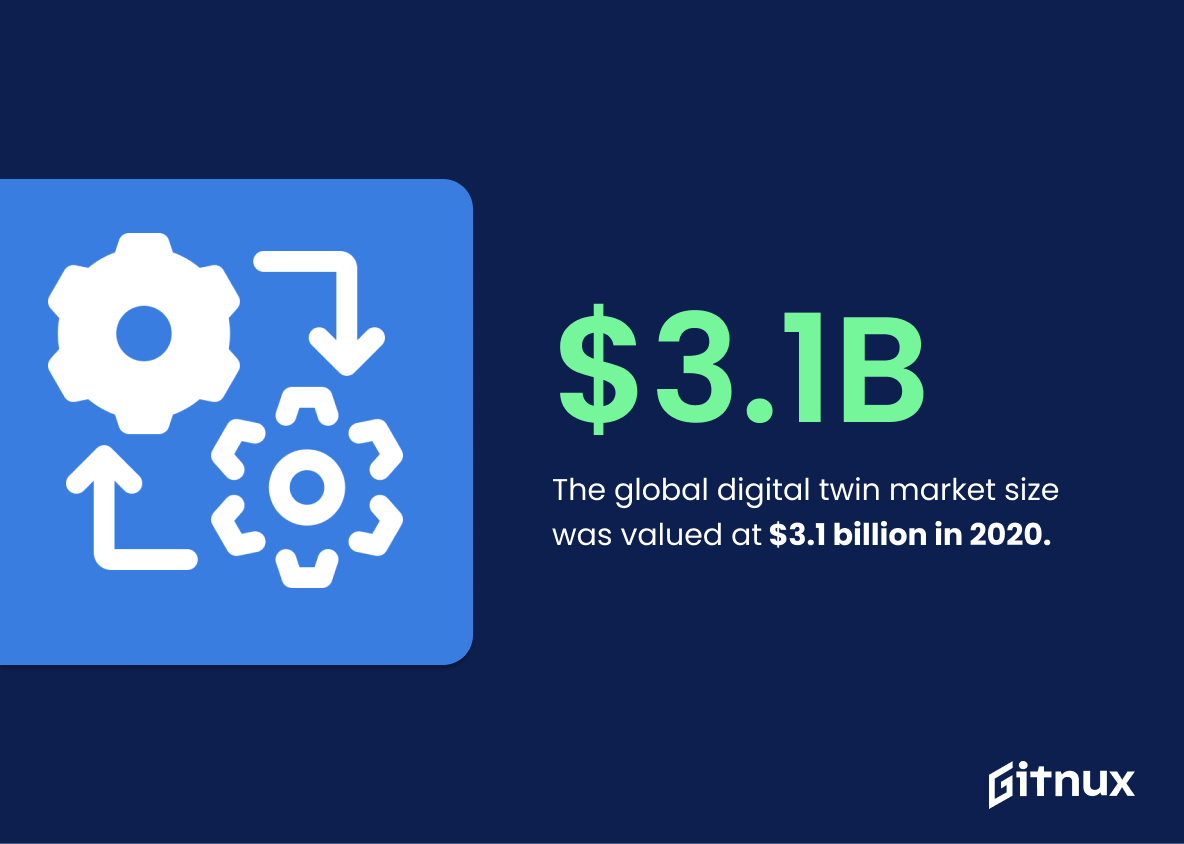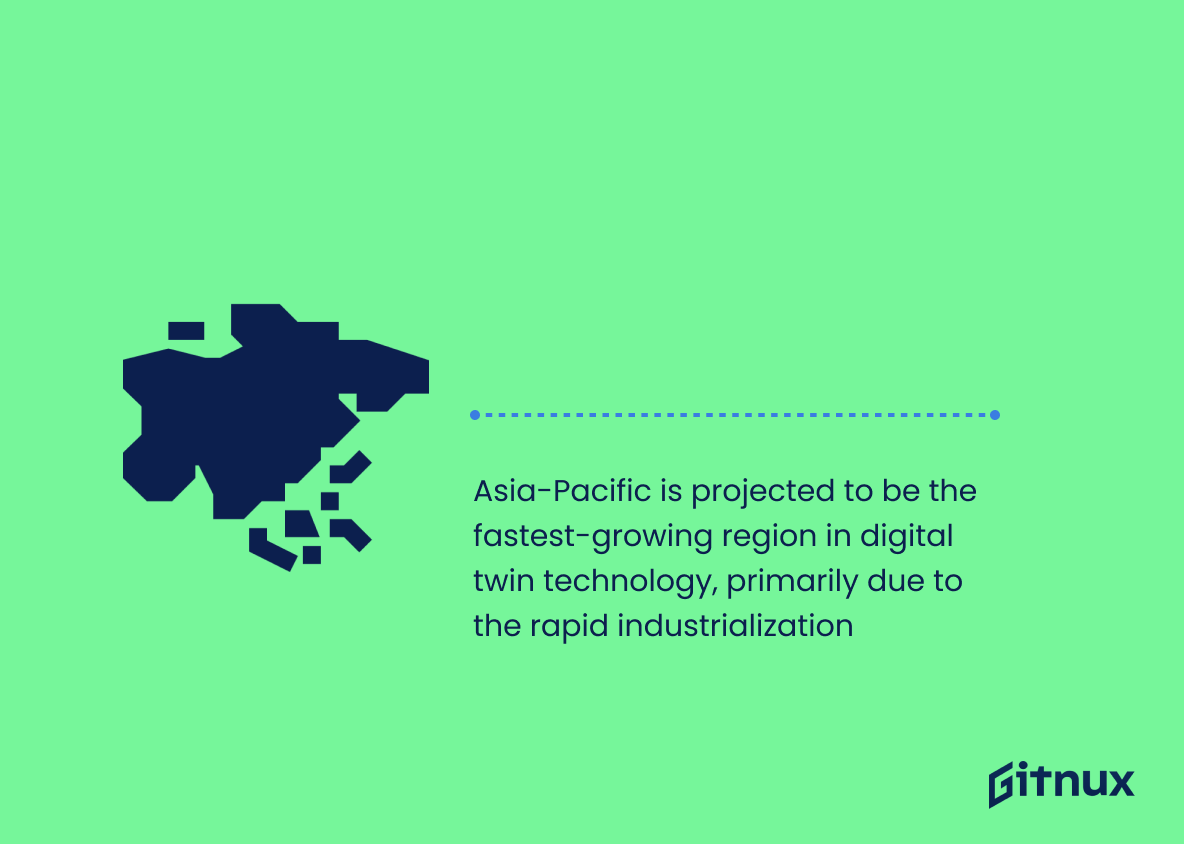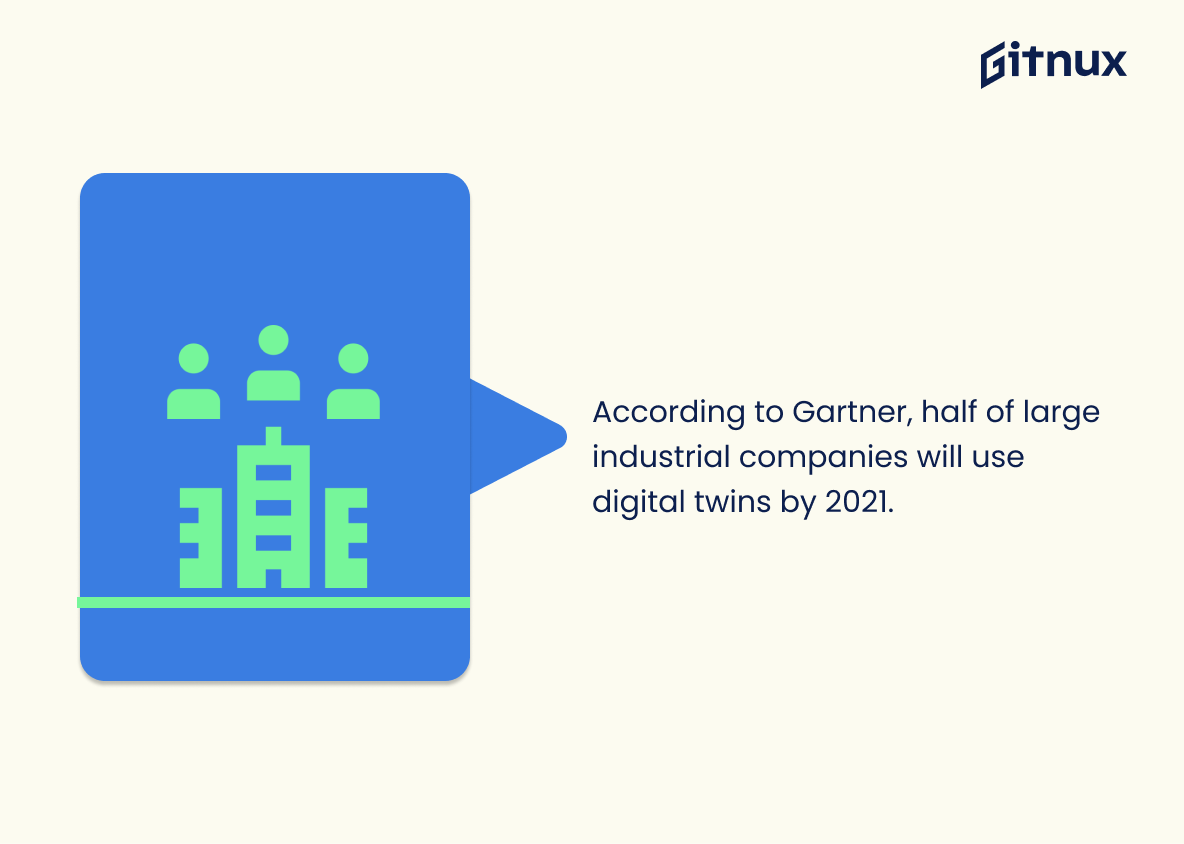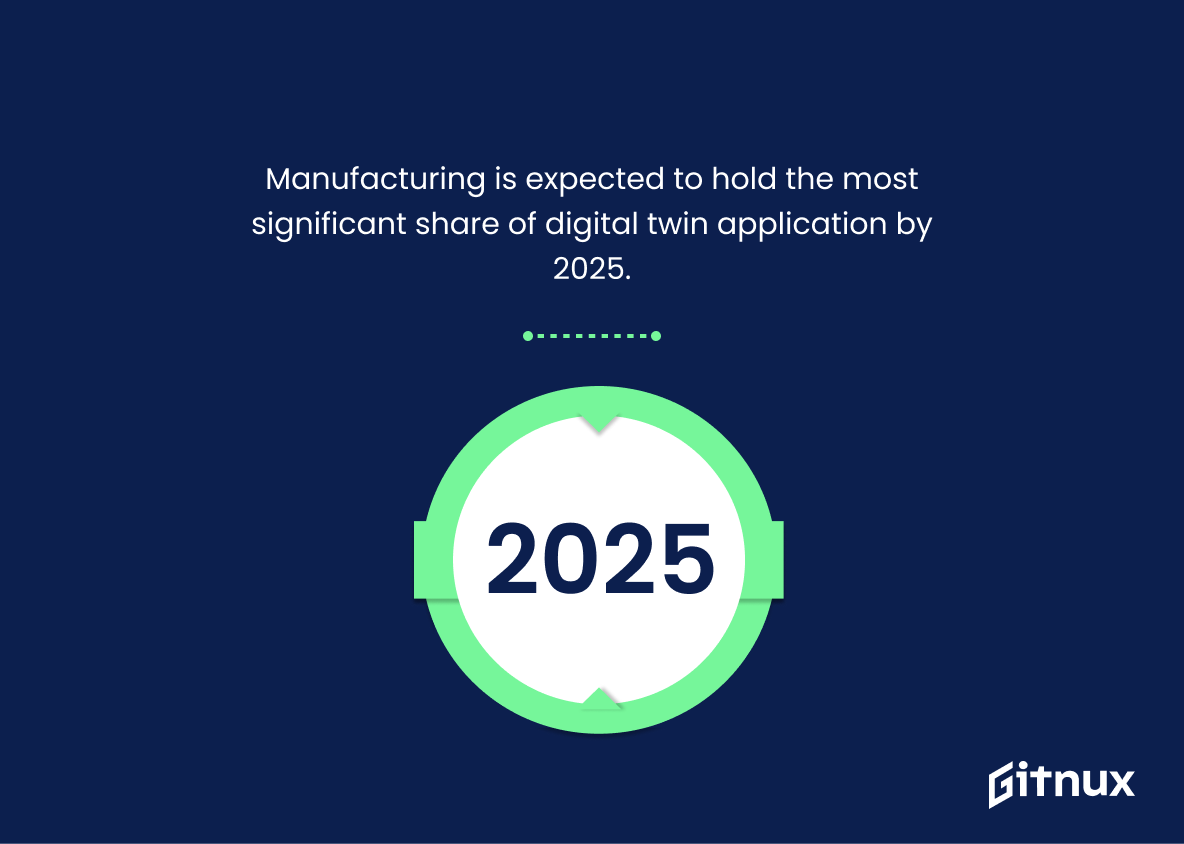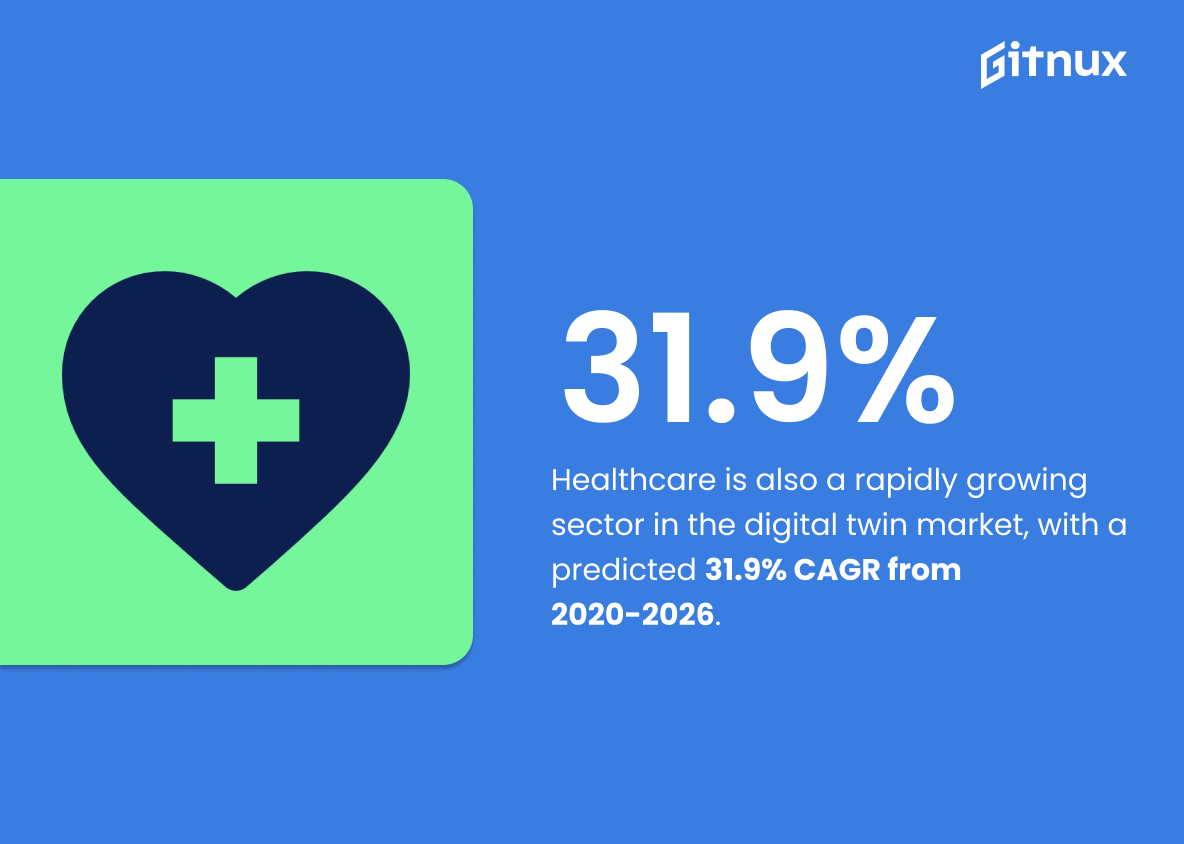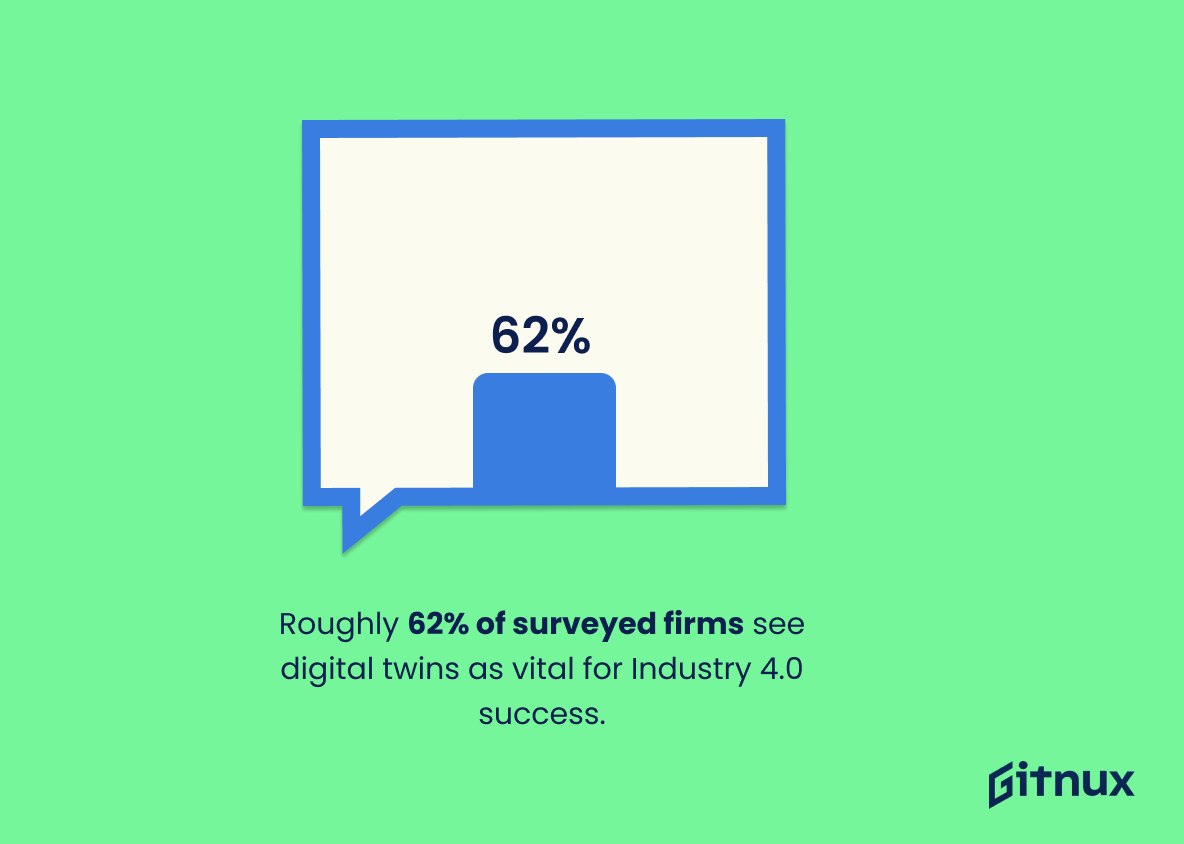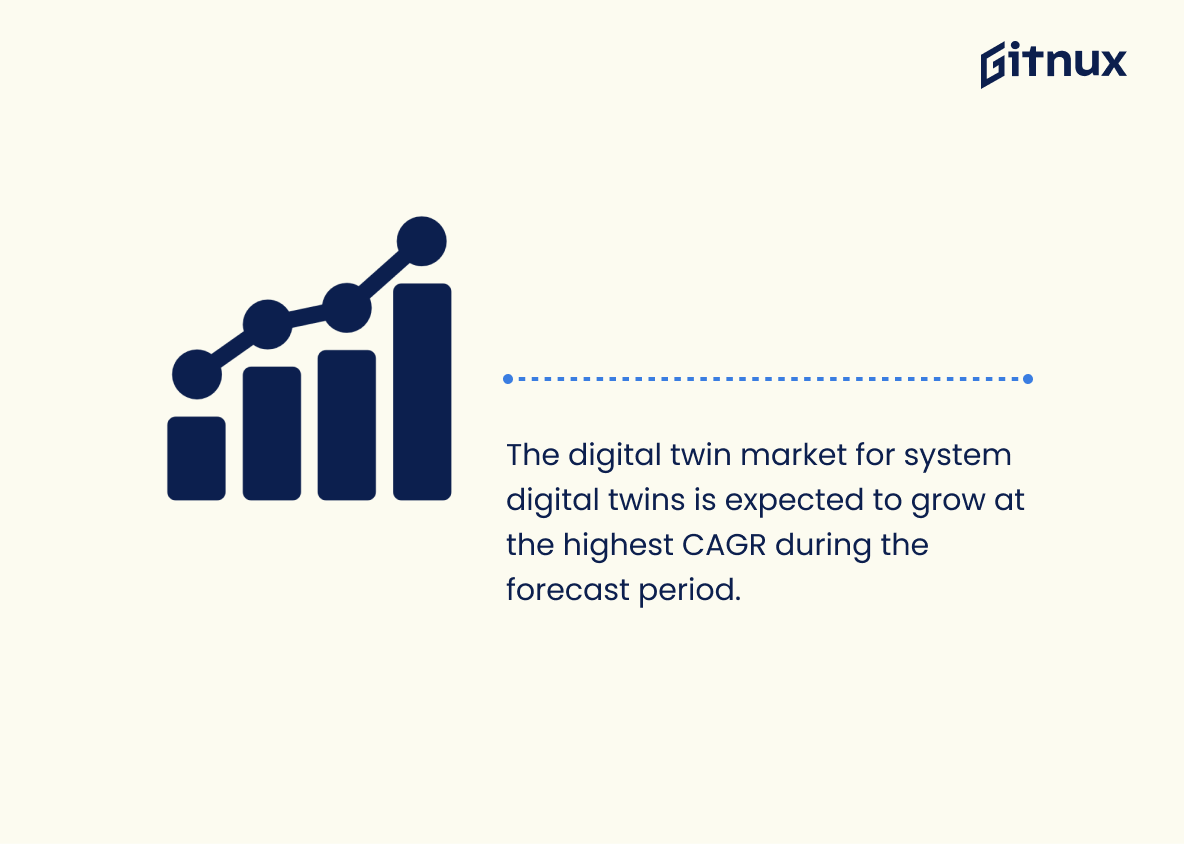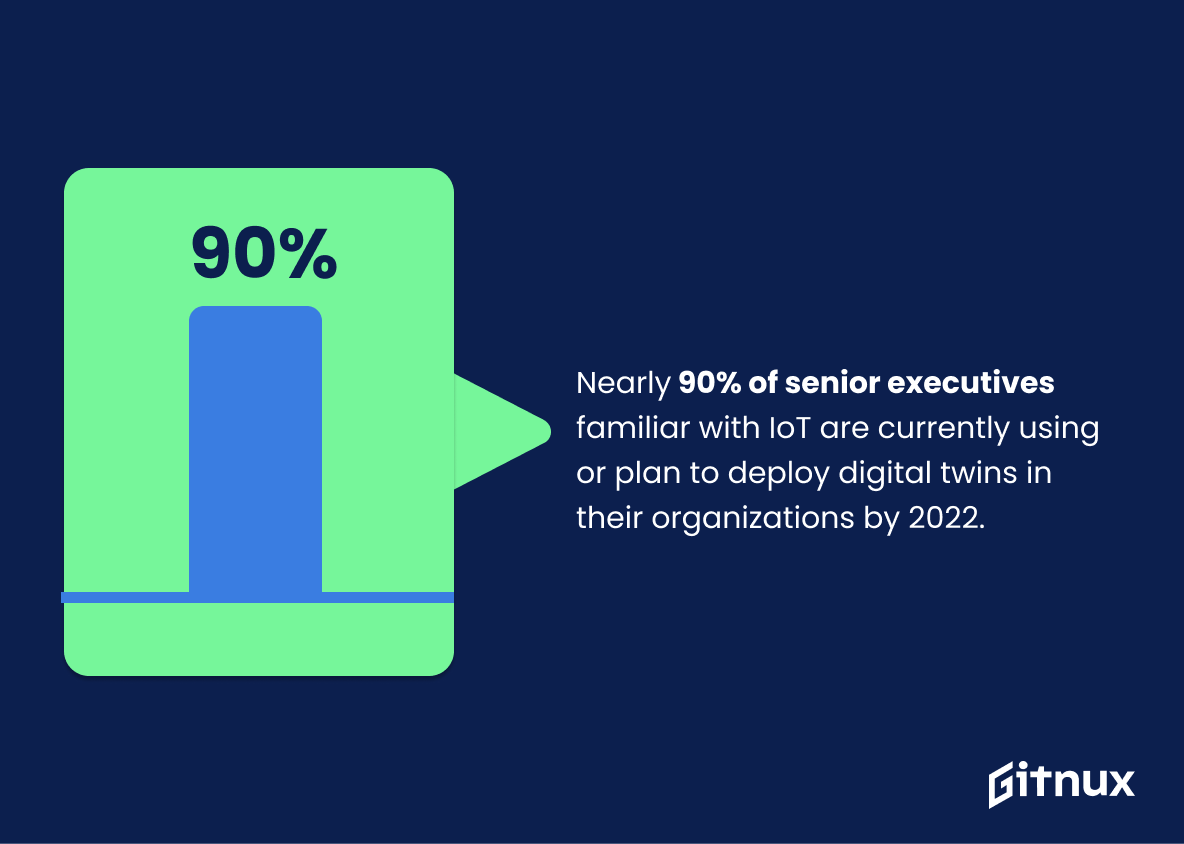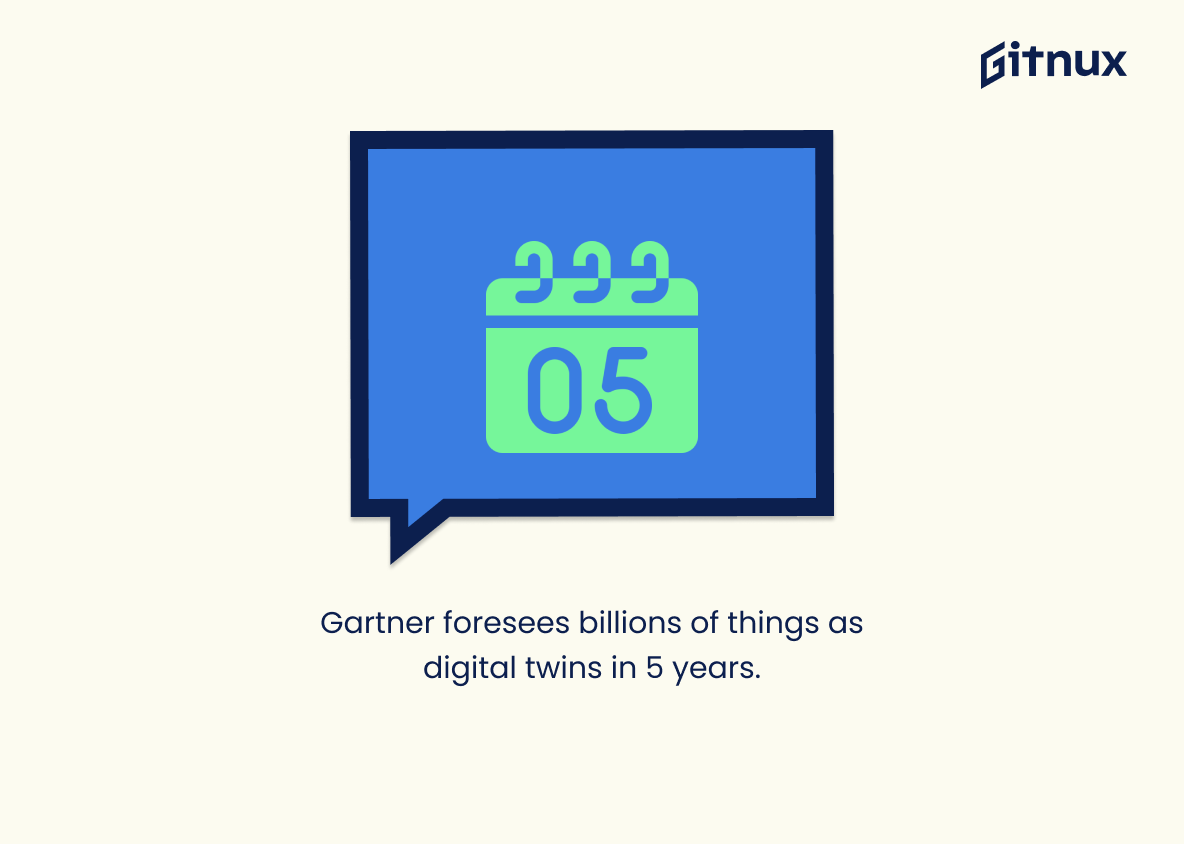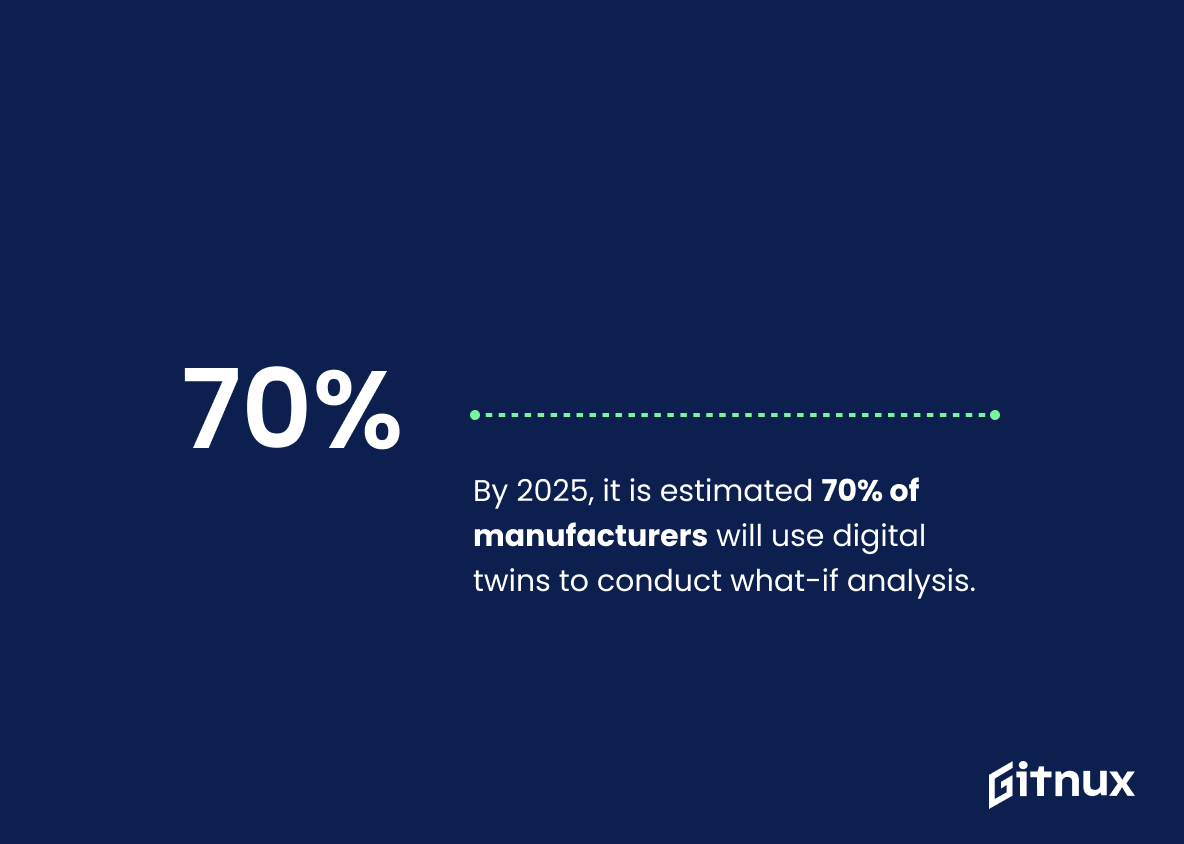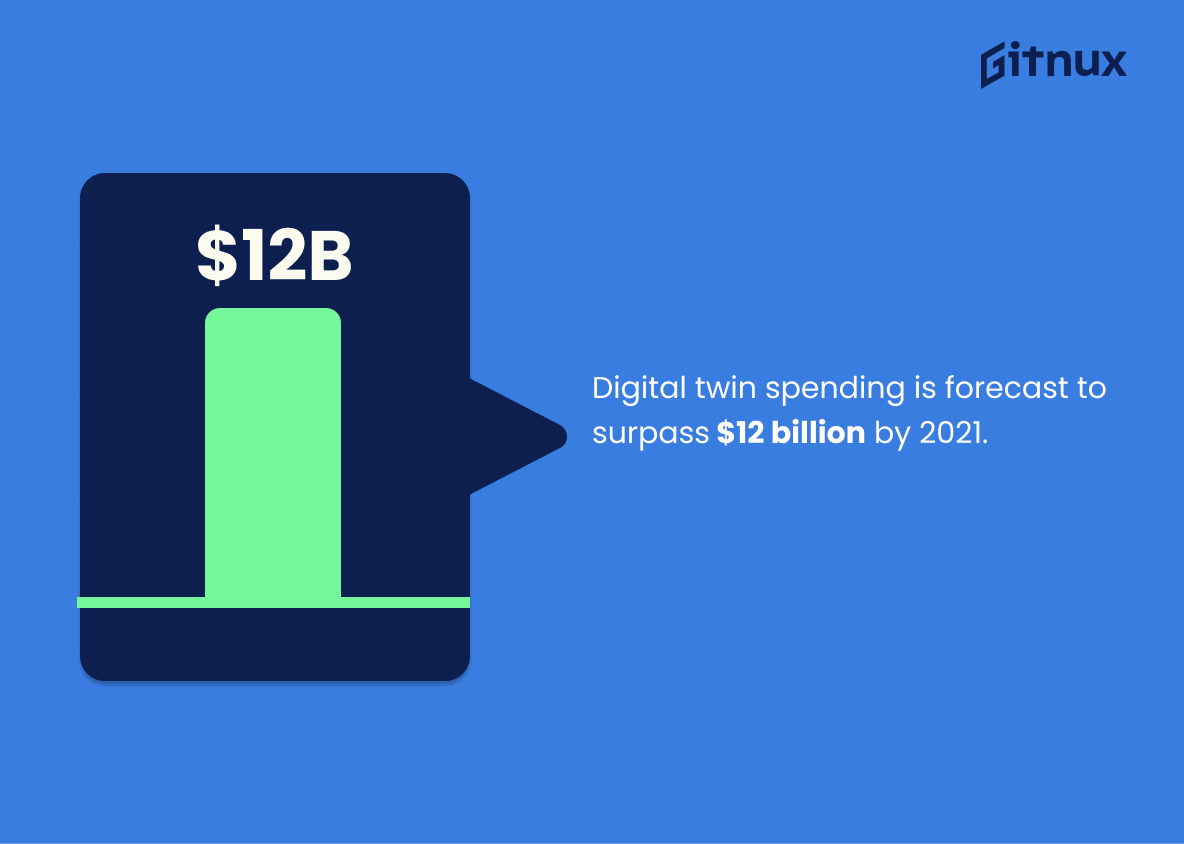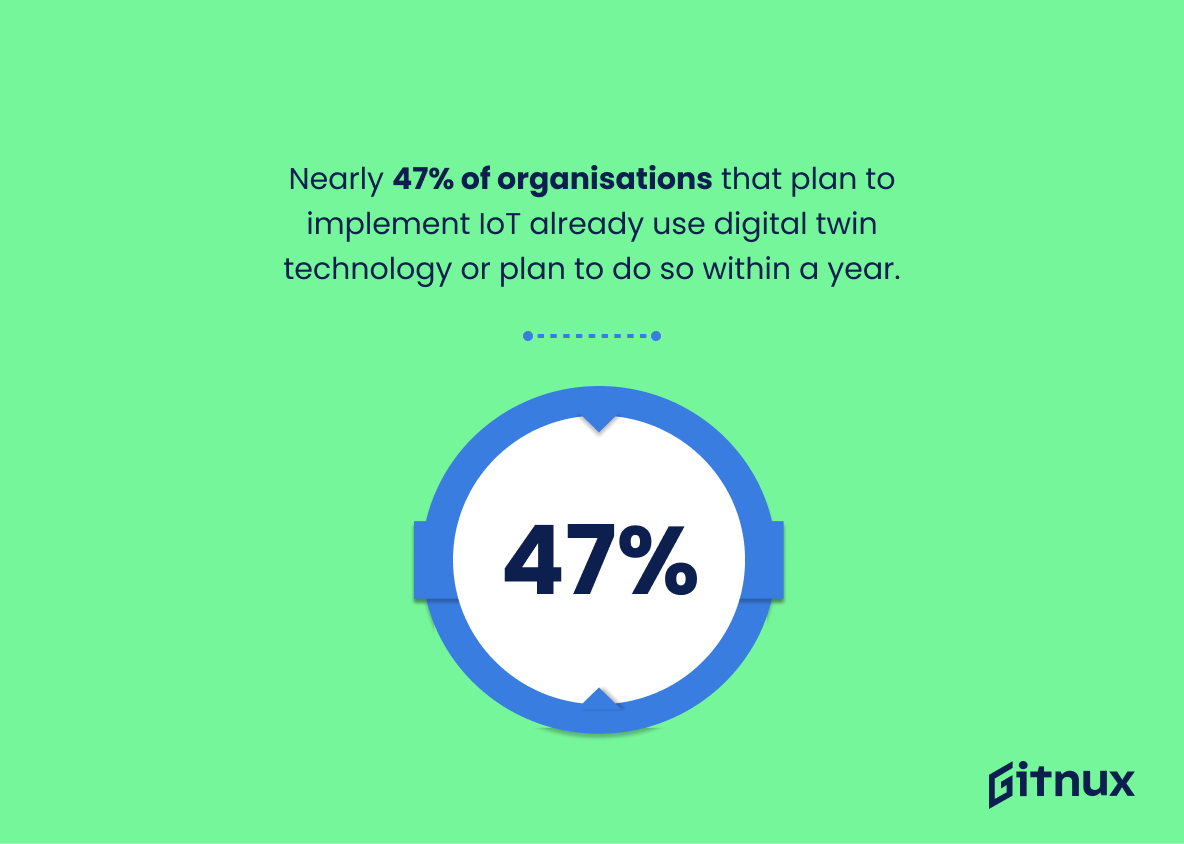In today’s digitally advanced world, businesses are constantly seeking innovative strategies to enhance their operations. One development leading this technological frontier is the concept of Digital Twins. This technology’s transformative potential has sparked immense interest across various industries globally hence necessitating a deeper understanding of its influence. Our comprehensive exploration of the Digital Twin industry statistics will present an insightful snapshot of this buzzing domain, offering a fascinating viewpoint on its current scenario, growth trajectory, and future possibilities. Join us as we delve into the numbers behind the narrative and discuss just how important the Digital Twin technology is shaping up to become in the global industrial landscape.
The Latest Digital Twin Industry Statistics Unveiled
The global digital twin market size was valued at $3.1 billion in 2020.
Peering into the realm of the Digital Twin Industry through the lens of 2020, one can’t help but be captivated by the crown jewel of data: a global digital twin market size valued at a staggering $3.1 billion. Now, why is this gem of information catching your eye, you may wonder? It serves as a robust benchmark, illustrating not only the financial power and significance of the industry, but also its mass adoption across diverse sectors. Moreover, this invaluable statistic offers context, hinting at the potential market expansion, trends, and industry growth trajectories. Investment patterns could be guided and decisions regarding market entry could be better informed by this potent figure. Ultimately, the monetary whisper of $3.1 billion echoes the resonance and impact of the digital twin industry in 2020.
The digital twin sector is expected to grow at a compound annual growth rate (CAGR) of 38% from 2021 to 2026.
Painting an exciting future, the projection of a remarkable 38% CAGR for the digital twin sector from 2021 to 2026 illuminates the meteoric rise this industry is set to experience. In the frame of Digital Twin Industry Statistics, this forecast stands as a beacon for investors, stakeholders and businesses, signalling not just a trend, but a profound shift in how industries might operate. With such staggering growth anticipated, it is clear that the digital twin revolution is not on the horizon – it’s already here. This dramatic growth trajectory heralds soaring opportunities for innovation, investment and development within this burgeoning market, making it a statistical highlight that’s impossible to ignore in any discussion about the state and fate of the digital twin industry.
Asia-Pacific is projected to be the fastest-growing region in digital twin technology, primarily due to the rapid industrialization.
Highlighting the prospects of the Asia-Pacific region in the sphere of digital twin technology serves as a beacon for future growth and opportunities. The anticipated industrial boom in this region signals an era of significant technological advancements and signifies a strategic pivot for businesses and investors eyeing expansions. The lightning speed of industrialization across Asia-Pacific offers a rich tapestry of possibilities for the digital twin industry, shedding light on the power of transformation this technology wields on a global front. Thus, this statistic is a critical marker, spotlighting an exciting frontier in the digital twin narrative.
According to Gartner, half of large industrial companies will use digital twins by 2021.
Highlighting this prediction from Gartner underlines the significant momentum behind digital twin technology adoption, especially within large industrial entities. It reinforces the expectation for rapid market expansion in the immediate future, providing a strong argument for businesses to embrace this technology trend. Incorporating this statistic in a blog post about Digital Twin Industry Statistics, helps readers comprehend the impending industry shift, validating the technology as a noteworthy investment and exploration area. Furthermore, it demonstrates that digital twins are not a fleeting tech trend, but rather a critical tool for businesses looking to streamline operations.
Manufacturing is expected to hold the most significant share of digital twin application by 2025.
In the whirlpool of the Digital Twin Industry statistics, one particular forecast stands out like a beacon. It paints a vivid picture of an impending shift in the landscape by 2025. A revolution spearheaded by Manufacturing. As per projections, this sector will claim the lion’s share of digital twin application, reigning supreme above all the others. This is noteworthy not just as an isolated fact, but for its implications on the whole Digital Twin Industry. It signals a seismic shift in the application realms of the technology, with Manufacturing leading the bandwagon, as the most transformative user of digital twins. By doing so, it provides a framework for investment, development and opportunities in this ever-evolving symbiosis of digital and physical worlds.
Healthcare is also a rapidly growing sector in the digital twin market, with a predicted 31.9% CAGR from 2020-2026.
The future promises a prospering landscape for the digital twin industry, as underscored by the expected 31.9% CAGR in the healthcare sector from 2020-2026. This remarkable growth indicator held up a world where technological replication of physical systems amplifies the potential of the healthcare sector, paving the way for novel innovations to revolutionize patient care and disease management. It signifies that the integration of digital twin technology could potentially transform healthcare, opening a new chapter of growth and expansion for this burgeoning industry. This projection paints a vivid picture of the emerging prominence of digital twins in healthcare and conveys the magnitude of its impact in reshaping the industry’s future.
About 62% of companies surveyed believe digital twin technology is essential for the successful implementation of Industry 4.0 strategies.
In the digital realm, this statistic serves as the pulse of the corporate world, showcasing a notable shift in the perception of digital twin technology. It portrays how the majority of companies deem this technology as the heart of Industry 4.0 strategies. It’s as if standing at an industrial crossroads, with a staggering 62% of companies pointing towards the path of digital twin technology. Through this statistical lens, we gauge how this technology is not merely a passing trend, but an essential cog to the wheel of industrial progress and innovation. This whopping alignment towards the technology underscores its growing importance in shaping the future of Industries.
The digital twin market for system digital twins is expected to grow at the highest CAGR during the forecast period.
The allure of the aforementioned statistic lies in the clear suggestion of growth momentum within the realm of system digital twins. Within the scope of a blog post about Digital Twin Industry statistics, this piece of data serves as a critical beacon of potential – pinpointing the area of the industry ripe for significant advancements. As the blog navigates the many aspects of the industry, this statistic becomes an invaluable guide, earmarking the system digital twins as a sector where the most dramatic growth is anticipated. Hence, it swirls the intrigue for entrepreneurs, investors, and tech savvies, stimulating further exploration and potential opportunity within this specific area.
Nearly 90% of senior executives familiar with IoT are currently using or plan to deploy digital twins in their organizations by 2022.
In the vast galaxy of Digital Twin Industry Statistics, this particular illumination of data, ‘Nearly 90% of senior executives familiar with IoT are currently using or planning to deploy digital twins in their organizations by 2022’, serves as the North Star. Guiding us towards the solid realization that digital twins aren’t just a theoretical concept, they are capturing the interest of leaders at the helm, sailing the waters of technological innovation. Rising beyond just being a trend, the implementation level of digital twins is showcasing itself as a key practice in the strategic playbook for countless organizations. As we transcend into 2022, these numbers imply a wave of acceptance and acted upon intent, making this statistic a beacon that optimally guides readers to comprehend the significance and growth trajectory of the digital twin industry.
The North American market held the largest share of the digital twin market in 2020 and is projected to follow the trend until 2026.
As we delve into the intriguing world of Digital Twin Industry statistics, there are certain key facts and figures that capture our attention and provide pivotal insights into this expansive market. One such arresting statistic is the dominant position of the North American market in the Digital Twin arena. In 2020, North America drew the lion’s share of the market, a trend that is projected to continue until 2026.
This dominance is more than just a numerical triumph. It is a testament to how North America, as a region, has whole-heartedly embraced this innovative technology. It highlights how industries across the continent have progressed in leveraging digital twins for optimizing operations, reducing costs, and enhancing product quality. This knowledge provides a vantage point for industries worldwide to understand how successful implementation looks.
Moreover, this continuing trend till 2026 offers foresight about future market dynamics. Other regions eyeing growth could observe North America as a forerunner, learning from their successful strategies and growth vectors. This North American hegemony, thus, gives a global perspective on the rate of adaptation of digital twin technology.
In short, this is not merely a statistic but a compass directing the course of the global digital twin industry, acting as both a marker of present success and a beacon of future paths.
87% of early adopters of digital twins reported achieving their goals set for their initial deployment.
Undeniably, the astounding figure, manifesting that 87% of early adopters of digital twins accomplishing their preliminary deployment goals, provides a powerful testament to the potency of this technology within its industry. This concrete statistic is a pertinent reflection in a blog post on the Digital Twin Industry as it not only heralds the success rates of initial implementations, but it also serves as a motivation for potential adopters.
By embodying such persuasive evidence of triumph, this statistic amplifies the credibility of digital twins’ capacity, showcasing its competency to deliver enterprise-oriented results. Therefore, potential adopters, industry stakeholders, and readers remain tuned into this very statistic as a beacon of digital twin technology’s potentiality, pushing the boundaries of innovation while seizing the goals set forth.
Research from Gartner predicts that there will be billions of things – physical entities – represented by digital twins in five years.
Unfolding the hidden implications of this potent statistic breathes life into the narrative of the digital twin industry’s meteoric rise. Decoding Gartner’s research, it predicts a digital revolution of gargantuan proportions. Billions of physical entities being represented by digital twins within a span of five years signals an explosive advancement in technology and alludes to the expansive growth opportunities within the industry. Amidst a flurry of transformations, this statistic stands as a beacon, exhibiting the fast-paced technological progression and its potential to redefine our future. It empowers readers with knowledge of the sheer volume and significant role digital twins will play in various sectors and their respective innovation strategies. Thus, the statistic exemplifies the massive future scope and rapid evolution of the digital twin horizon.
By 2025, it is estimated 70% of manufacturers will use digital twins to conduct what-if analysis.
Highlighting the statistic in our discourse illuminates the growing dependence on digital twins within the manufacturing industry. It underscores a significant shift towards digitally controlled and improved systems and processes. The predictive power of ‘what-if’ analyses lends an invaluable edge to manufacturers, empowering them to anticipate, and thus, better prepare for potential scenarios. Therefore, the projection of a 70% adoption rate by 2025 becomes a pivotal point of discussion in our journey through the digital twin industry’s landscape, underpinning the far-reaching influence and transformative potential of this cutting-edge technology.
Digital twin spending is forecast to surpass $12 billion by 2021.
Forecasted to smash the $12 billion threshold by 2021, next year’s spending on digital twin technology illuminates the burgeoning importance of this sector. Such a revelation signals the monumental recognition of digital twin technology by distinct industries, revealing its transformative power. In the context of a blog post on Digital Twin Industry Statistics, this outstanding forecast serves as an emblem of the sector’s rapid growth, affirming its evolution from niche to necessity. Bridging the physical and virtual world, the rising investment in digital twin technology reflects the value it contributes to improving efficiency, innovation and strategic decision-making in various business operations. So in a nutshell, the skyrocketing trajectory of spending underscores the crucial role digital twins play in shaping a future where digital and physical realities coalesce.
Nearly 47% of organisations that plan to implement IoT already use digital twin technology or plan to do so within a year.
Unveiling a fascinating trend in the tech industry, this statistic illuminates that nearly 47% of organizations planning to embrace IoT are either already exploiting digital twin technology or intend to do so within a year. This insight acts as a harbinger of the growing popularity and acceptance of digital twin technology as a vital part of the IoT ecosystem. Actively painting a picture of the industry’s landscape, it underlines the critical role of digital twin technology in driving digital transformation strategies across various organizations. This compelling statistic features the forefront role of digital twinning as not just a buzzword, but as a pivotal enabler of sophisticated IoT solutions, thus augmenting the core of any writing focused on digital twin industry.
According to a study by Deloitte, 58% of respondents reported a significant Return on Investment (ROI) on their digital twin enabled IoT projects.
Highlighting the statistic from Deloitte’s study lends credence to the discourse around the profitability of ventures involving digital twin technology within the Internet of Things (IoT) realm. It solidifies the narrative that major players within the industry are recognizing noteworthy ROI, compelling potential investors, technology enthusiasts, and innovators to view this as an area ripe for exploration. Furthermore, it adds a quantitative dimension to the conversation, allowing readers to grasp the measurable financial implications of investing in digital twin-enabled IoT projects.
Energy and Utilities sector is projected to see a CAGR of 41.7% of digital twin adoption from 2021-2026.
Accentuating the astounding potential of the Digital Twin Industry, a steep CAGR of 41.7% in the Energy and Utilities sector makes a compelling case of its growth trajectory from 2021-2026. This striking statistic underscores not only the monumental role of digital twin technology in ushering an era of efficiency and optimization in utility management but also its mainstream acceptance in major industries. This anticipated surge in adoption implies a host of opportunities for startups, tech-giants, as well as investors looking to tap into this revolutionary landscape. Consequently, it becomes a vital data point to understand the trends, market dynamics and future potential of the Digital Twin Industry.
Conclusion
In essence, the Digital Twin Industry is no longer a futuristic concept, but a present reality, rapidly gaining ground. The significant statistics shared in this blog post solidify its value and forecast a steady potential growth. The transformative enhancements it brings to varied industries such as manufacturing, healthcare, transportation, and more, make it a technology to anticipate and plan for. Certainly, as understanding and adoption increase, the statistics underline a brighter future where the digital and physical worlds coalesce, optimizing productivity, efficiency, and business success at large. To stay competitive in an ever-evolving digital era, organizations and industries must consider Digital Twin as a dynamic strategy in their digital transformation journey.
References
0. – https://www.www.plm.automation.siemens.com
1. – https://www.www.gartner.com
2. – https://www.www.globenewswire.com
3. – https://www.www.marketdataforecast.com
4. – https://www.www.iottechnews.com
5. – https://www.www2.deloitte.com
6. – https://www.www.vertic.com
7. – https://www.www.reuters.com
8. – https://www.www.accenture.com
9. – https://www.www.marketsandmarkets.com
10. – https://www.www.marketresearchfuture.com
11. – https://www.www.statista.com
12. – https://www.www.grandviewresearch.com
13. – https://www.www.smart-energy.com
14. – https://www.www.prnewswire.com
